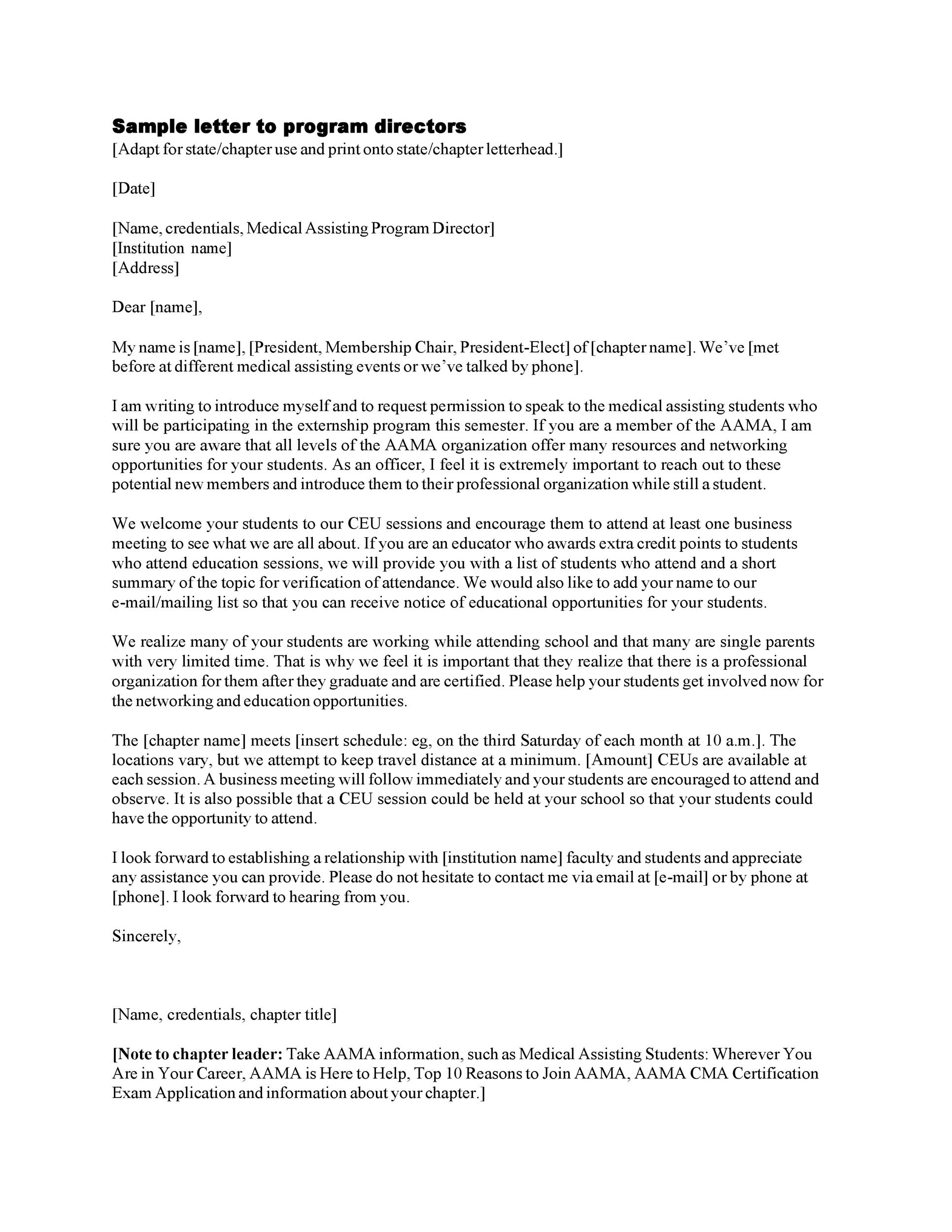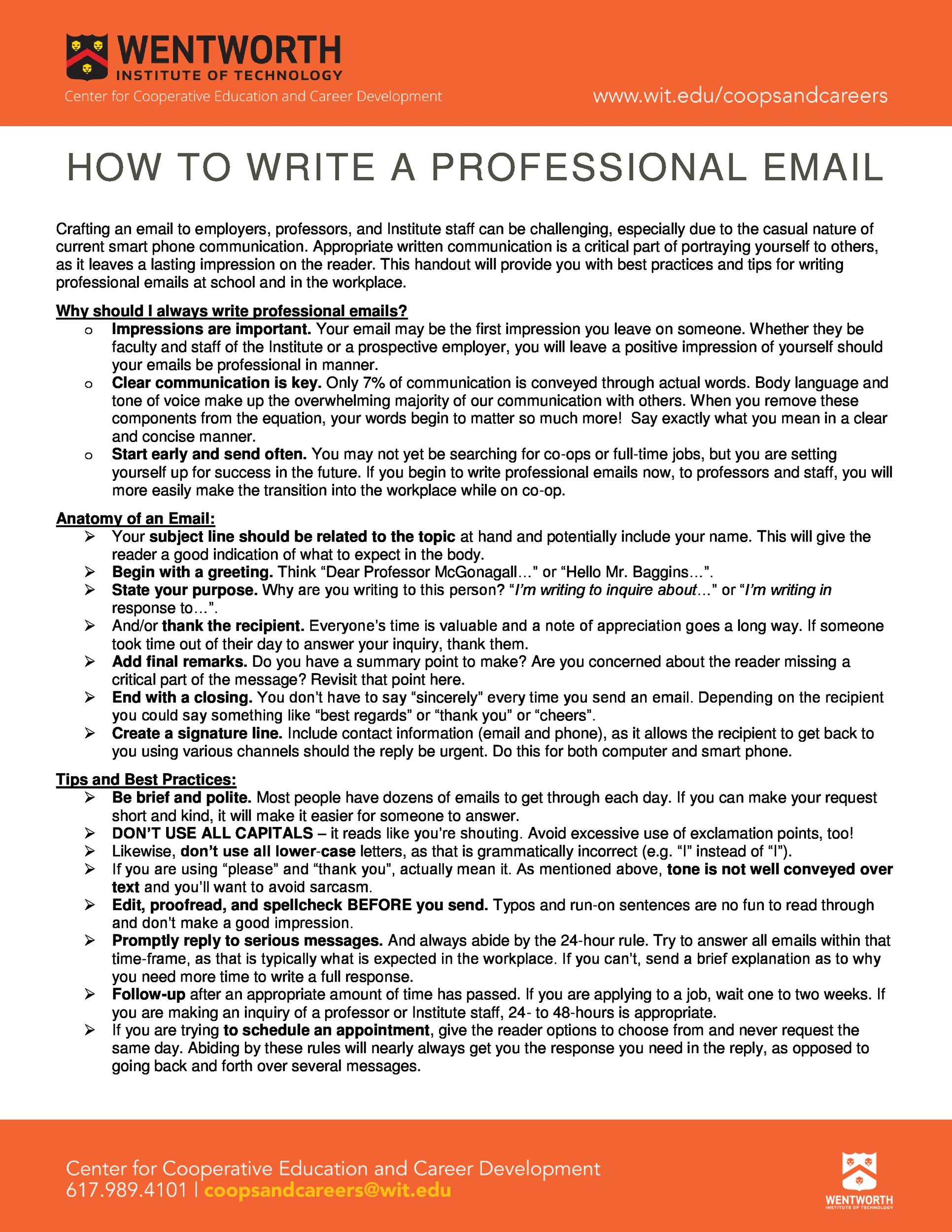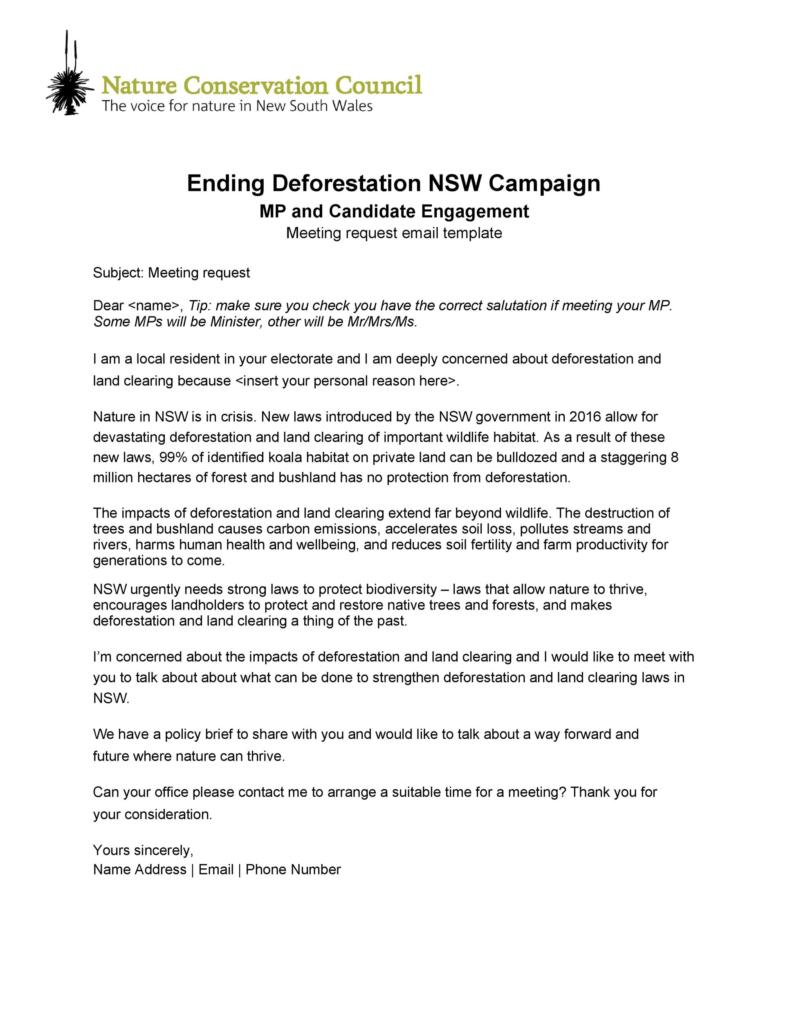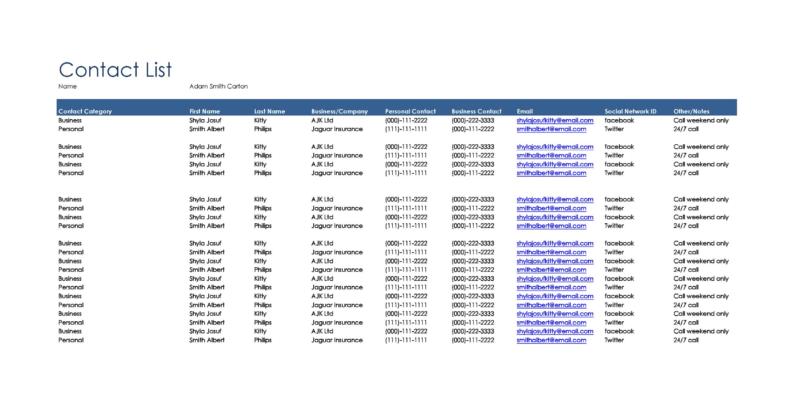Nowadays texting and social media platforms are very popular but despite that, email still happens to be the most common (and useful) form of written communication in the business and professional world. However, it’s also the most commonly abused. More often than not, emails have an angry or impatient tone, giving the impression that the person who wrote it is either snobby or bossy. And that shouldn’t be the case.
Table of Contents
- 1 Professional Email Examples
- 2 Guidelines in Making a Professional Email Format
- 3 Professional Email Format
- 4 Importance of Making a Professional Email Example
- 5 Useful Tips in Making a Professional Email Format
- 6 Professional Email Templates
- 7 How to Write a Professional Email
- 8 Mistakes to Avoid When Making a Professional Email Example
Email is actually a great means of communication because:
- You can send a message to someone and start a conversation even if you’re not physically close or well-known to each other.
- Professional emails permit you to keep the lines of communication for the purpose of keeping projects moving, making urgent decisions and other relevant purposes.
- The communication is fast and seamless. No matter where you are in the world, as long as you have access to the internet, you will be able to send and receive emails.
Writing emails which are brief and direct are great professional email examples. The time you spend writing the email and time spent reading your email will be reduced, thus increasing productivity. However writing clearly and professionally is actually a skill. And just like any other skill, you need to learn and keep on practicing to get better.
When you are learning how to write a professional email, even if it’s short, you might take as much time as when you are writing a long email. That’s because you have to think about everything you are to write, to be able to convey all the information needed, though briefly. However, with practice, your writing skill will get honed and you will be able to get faster and better at it.
This article is all about emails for the workplace as well as how to start a professional email and how to end a professional email. Read on and be guided by all this useful information.
Professional Email Examples
Guidelines in Making a Professional Email Format
Part of being a good professional is giving importance to perfection especially on matters of communications, like in starting and ending a good email with a professional email sign-off. Technology has presented to us the opportunity for a faster means of sending messages thru emails.
A bonus to this technology is the ability to edit, enhancing, spell check (and more) your messages. No reason now to compose a bad email message, at least in form. Now for the substance and the more important aspect, certain guidelines need to be followed to make sure your email achieve its goal.
The purposes of emails are vast but for the sake of discussions, let us apply the use of emails in a work environment. The email message could be a thank you letter, a resignation letter, a request for a recommendation letter. Whatever the purpose of your email, always make sure it meets the standards of professionalism. It should be always organized, concise, and direct to the point.
What then should an effective email include? What should it not include? How do you open it, sign it and close? Here are suggested guidelines to follow in making a good professional email message.
Subject Line
This will contain the objective of your message. At first glance, the reader will immediately be informed of the email’s purpose. Make it concise and direct to the point.
Greeting
The use of this will have a pleasant impact on the reader. Include the full name of the person for formalities sake and his/her title:
Length
Be concise. Include only relevant matters. Nobody wants to read long messages.
Font Style
Be professional when you choose your font style. On a work environment, using playful or colorful or ornate fonts makes the reader feel that the sender is not serious or disrespectful, especially on business matters. Italics and bold letters can be used sparingly for emphasis. A message typed in ALL capitals comes across as angry. Avoid such.
Emoticons
For professional messages, do not use emoticons. Save these for your personal correspondences.
Spelling and Grammar
Email is not exempted from the use of good grammar and grammar. Be professional, otherwise, a sloppy message would not be taken seriously. Edit your email carefully on. Impress your recipient with an error-free email message.
Closing
A sign-off message should be simple and direct. For requests made, “Thank you” will be appropriate. Some would end with “Respectfully”, that would be alright too. The inclusion of your name, your title and contact information will indicate professionalism. The reader will be kept aware of your request.
Apply professionalism when composing your email messages. Be concise and clear on your objectives. When dealing with superiors, be sure to accord them the proper titles. Format the letter to make it presentable. There are many applications available to do this. Remember that a good email will impress your recipient and will almost always grant your objectives.
Professional Email Format
Importance of Making a Professional Email Example
It is inevitable these days for businesses and other similar entities to encounter unprofessional emails. Because of their easy access and the various ways they are dispatched (either leaked or hacked, then leaked). The dark effect on emails is present almost everywhere now. Currently, it is now being an issue on the political and economic arena and they are proving to be damaging.
So it’s important to learn how to start a professional email and how to end a professional email as well. Consider these when you use emails as your means to communicate:
Learn How to Write a Professional Email
To reiterate, follow the guidelines for a professional email. It is still a letter but sent differently. But that is not an excuse to skip the guidelines: the salutation, the objective, the body and the closing. Make it a habit of re-reading your emails before sending them. Often times your mood could define the intent of your letter. Bad mood, bad email, re-edit when calmer.
Remember that Emails are Impersonal
Emotions tend to be more displayed reading emails as against other forms of communications like phone calls or formal business letters. Let’s face it, emails are highly impersonal. So there should be no excuse for being an ass in an email. Be as civil as possible and if the email should prove annoying to certain parties, send it only to those who would weigh value with it.
Keep in Mind
It is not expected to immediately respond to emails. If it were an emergency, it is usually done by mobile. When dealing with emails, don’t do it hurriedly, take your time. Haste can lead to poorly written and thus would be classified as unprofessional emails. If you needed to bide time, you can respond to an email by first thanking the sender and let him/her know when you’ll respond.
Think professional when dealing with emails. Always use the guidelines and never do emails in haste as you would be prone to making poorly written ones. Always remember that you are working on professional quality emails.
Useful Tips in Making a Professional Email Format
The arrival of the Internet age and the rise of social media has generated dramatic changes in communications and this has made it difficult to distinguish between formal and casual writing. Because of the advent of new applications, people have resulted in sending formal communications such as professional emails, that are stylized in format and which are more appropriate than text messaging or a post in social media. Is it an effective way of messaging on a professional basis? Here are some rules to consider in order to effectively communicate with people in your work environment:
Make Use of Correct Punctuation
Now we are going back to old school. Without proper punctuations, the thoughts in your message could turn out confusing. Avoid multiple run-off thoughts without the right punctuations. Always write in complete sentences. Start each one with a capital letter. Use explanation point sparingly unless used for emphasis. This also applies to question marks and ellipses.
Abbreviation and Shorthand Texting Must be Avoided
Make it a point to spell out words and phrases fully. You might know what “ASAP” or “IMO” mean but does your recipient? Do not take this for granted as it may lead to confusing them and would seem unprofessional. In making emails to maybe your employer or a client, using text shorthand is a no-no. On a professional level, it would leave a bad impression on your practice.
A Conversational Tone Isn’t Appropriate
Being impersonal in email communications is bad and conversely, being too familiar and conversational is just as bad. For first time communications, maintain self-restrain. Always be courteous and avoid informality as this would come across as disrespectful and again, a lack of professionalism.
Convey Your Message Through Complete Explanations
Do not adopt an attitude as you do in social media. Communications should not be dependent on “like” or “reply” buttons. Neither should your messages be limited to 140 characters. Take your time to write your message or response and be sure it would address all of the issues relevant to the topic at hand.
Make Sure to Proofread
Give yourself enough time to proofread your email line by line. It should be free from typographical errors, it should be clear and it should appear professional to the recipient. If you still have time to spare, proofread again just to filter out errors. Remember, mistakes will not go unnoticed.
Be Polite and Direct
If your message should run for three or more paragraphs, find a way to trim it without losing its clarity. Use attachments if it could help shorten it. In your communications, using the words “please” and “thank you” will imply humility. Use them.
Here are Some More Points for You
- You know the adage, “familiarity breeds contempt”. Never assume familiarity with people you just met, most especially in the work environment. This applies as well to communications where it is required to maintain a degree of formality. Your supervisors expect it from you and your clients deserve it.
- When dealing with your Subject line in your email, be more specific to communicate more effectively.
- In your message’s body, put the main thought in the opening sentence. No time wasted and the reader would continue reading the message. Your letter is not a movie and the reader won’t care about a surprise ending.
- Avoid using the word “This… as in “This needs to be done by 5:30”. You need to specify first what needs to be done.
- Again, never use all CAPITAL letters. It makes the recipient feel he is being shouted at. All lower case letters are also not appropriate. Just put capital letters where they are required… at the beginning of each sentence.
- Text speak may be fun and convenient but they shouldn’t be used in business emails. LOL, BTW, WUWT and the like should be avoided. Even if you do use these, how sure it is the recipient would understand them. PLZ, avoid using text speak lingo in business communications.
- Again and over emphasizing it, proofread the message before hitting the send button. For emails that you deem are important, you need to promptly reply to them. At times, materials that are required by the sender may be unavailable. Send a brief response explaining the delay and give a time frame for you to fulfill the request.
Follow guideless on designing your messages. Remember, such messages should stick to professional standards. Pay attention to details, both in form and substance, Always maintain a sense of formality in your messages, especially when dealing with your superiors or your clients.
Professional Email Templates
How to Write a Professional Email
When writing your professional email format, you will need to know exactly how to do it. Here are some helpful tips for you to guide you through the whole process. These practical tips will be very helpful, whether you are new to writing emails or you’ve been doing it for some time now.
Start Your Email with a Greeting
The word “Dear” is the most common and most meaningful term of endearment used to begin a message. What follows the word “Dear” will depend on what your relationship with the recipient is. Typically with a more formal email, you will have to follow it with the full name of the recipient.
Express Gratitude to the Recipient
For letters of queries, start the body of your letter by thanking the recipient for her request. For inquiries about the company’s plans, you can start with: “Thank you for contacting the XYZ Businesses….” Or perhaps if one has replied to your email, you can start with: “Thank you for your prompt reply….”
Thanking the reader will put him/her at ease and it will definitely make you appear more polite. Obviously, thank you notes are not required when you are starting a communication.
Follow with the Purpose of Your Email
Again, go directly to the purpose of your message. Make it clear before you proceed to the main text of your message. People do not want to waste time reading wordy emails so make your sentences short. Of course, you still need to pay attention to your grammar, spelling and punctuation. Remember that your letter represents a professional image of yourself and your company.
The Come Your Closing Remarks
It is always polite and customary to thank your reader one more time and then add some closing remarks. The most common sentence used in such communications: “Thank you for your consideration”. There are several variations of this phrase but it is the simplest one. After this, add some closing remarks. Here is a simple and typical closing remark in the next point.
Sign-Off Your Email
An appropriate professional email sign-off with your name should complete your message. “Best regards”, “Sincerely”, “Respectfully” and “Thank you” are all professional terms to close your message. Then finally, before sending the message, proofread it again… just to be sure no errors are present.
It is worth repeating these steps in making your perfect professional email message. Remember your email will reflect your character and that of your company. Follow the guidelines and take note on what you should and should not do when composing your email message.
Mistakes to Avoid When Making a Professional Email Example
To make a good impression of yourself and also/maybe that of your company you need to follow professional email examples, which have the right etiquette to communicate clearly. As aforementioned, this will leave a good impression on the readers.
Emails have always been thought as a means for casual communications. But the ease and accessibility of its application have made it a major tool in handling the communications of businesses. But it now takes a more formal form and guidelines are needed to make messages more professional. If followed, an error free email will leave a stunning and memorable impression on its reader. Here are some tips to improve communication skills when writing an email:
Utilizing Language Used in Text Messaging
At this point, almost everybody is aware that the use is very unprofessional. It almost breaks all the rules of a professional message: misspellings, incorrect grammar and casual language. The recipient could conclude that one is lacking English skills and do not give importance to the use of proper language.
Not Using Abbreviations with Proper Etiquette
Never assume that abbreviations are understood by everybody. An abbreviation in your country and used in a message sent to say, Japan, would just leave the reader confused. But abbreviations can be used in many instances. Take this example:
Forgetting the Salutations and Greetings
Always open your messages with “Dear” and end with “Regards” or “Sincerely” or “Respectfully”, what whatever else is appropriate. This is very important, especially in initial communications. Depending on who you are addressing, the reader’s name is appreciated. In America for example, they like to be addressed by their name instead of the usual “Sir” or Ma’am”. Doing this would always give your message a sense or professionalism and respect for the reader.
Not Checking Spelling and Grammar
Run the spell check application on your message. Double check. Often, spell check will correct spelling but not the grammar. Or some words have multiple spellings but different meanings (e.g. there, their, there’re). Do the corresponding corrections.
Not Using an Appropriate Signature
When signatures are present in the outgoing emails, be sure it adheres to the above protocols, like no texting language and words spelled correctly. This would give a good impression that you are serious, well-versed and professional.
Not Drafting Emails
For long documents, use Microsoft Word. The application also offers (and more) functions to edit and/or enhance your document. After writing your message, cut and paste into the browser, ready to be sent. Some advantages using this method: If the browser crashes or loses power, you lose everything.
Also, accidentally pushing the “send” button will transmit to the recipient an “unfinished” message. You would be forced to send another message to the recipient informing him/her of the prematurely transmitted message. It is not very convenient and certainly irritating to the recipient.
Forgetting to Attach any and all Attachments
If indeed there are attachments to your message, be sure that they are there. As the message itself, the attachment should be edited. Check for errors and correct them, spelling and grammatical wise.
Take into consideration the volume of emails being received from everywhere by your client. There could hundreds of this every day. Make your email stand out. Make it memorable. Following the guidelines will make sure of that.












































